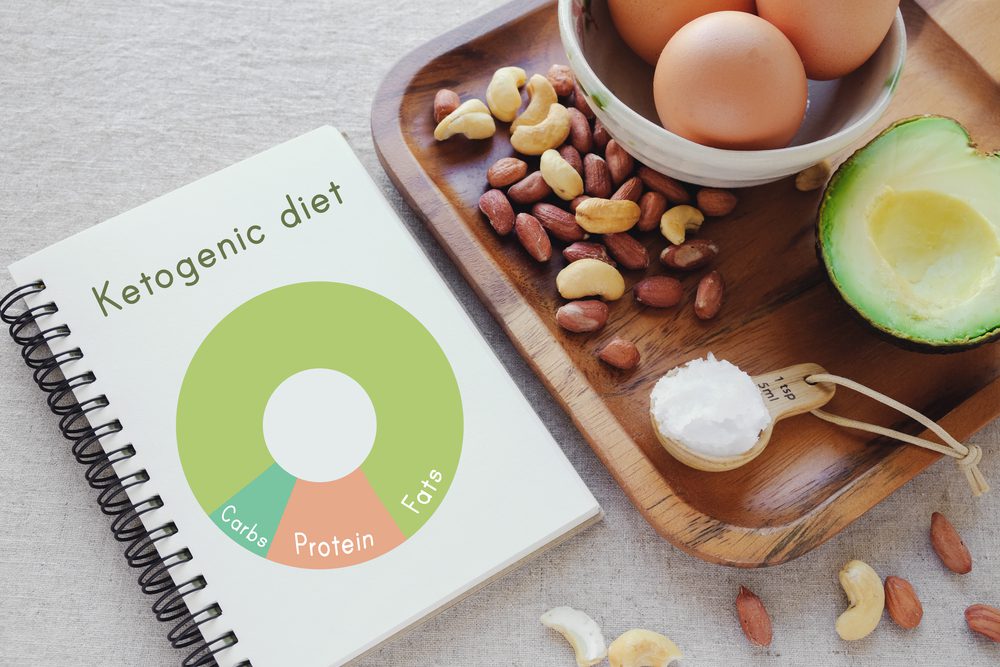
The best online fitness resource you'll ever need. We filter out the BS to ensure you meet your health and fitness goals!

The best online fitness resource you'll ever need. We filter out the BS to ensure you meet your health and fitness goals!

The ABC diet is an incredibly restrictive diet promoted by and marketed for pro-ana (anorexia) supporters.
ABC stands for Ana Boot Camp. It cannot be overstated how dangerous the diet is. It should only be undertaken following the advice of a health care professional. Many who follow the diet for the full 50-day plan end up putting the weight they have lost back on due to a lack of after-program support.
The ABC diet does result in fat loss. But it does not support dieters with maintaining their new weight.
The ABC diet is an intense 50-day program requiring participants to consume a different number of calories each day, but never more than 800. A day’s calorie intake can be as low as 50 but rarely above 500 save for the occasional 800 days ‘feast’. Occasional 24hour fasts are even required.
No foods appear to be off-limits as long as the participant meets the calorie budget, including vegetable calories. Other diets do not strictly track vegetable calories.
When they go over their calorie budget by mistake, participants are advised to partake in exercise. They need to burn those excess calories off.
For context, most professional advice is to not go 500 to 1000 calories below a person’s maintenance calories. It is the amount you need to eat to maintain your weight during a fat loss phase. Going beyond 1200 calories, it would be advised to go no lower than 1200 due to health and adherence reasons.
The universally accepted rule to losing body fat is to put yourself in a calorie deficit. To burn more calories than you consume. You can achieve this in multiple healthy ways. Some choose to calculate their maintenance calories and simply reduce their caloric intake by 500 calories. Over time, they lose body fat.
Some choose to use both a small restriction (calories in) whilst simultaneously increasing their activity levels (calories out) to create this deficit.
A 500 calorie deficit is the most popular size of a deficit as it’s easily manageable. When paired with a resistance training program, it preserves the most muscle mass. On average, this results in a weight loss of about 1lb per week.
It’s not recommended to go much beyond a 500 calorie deficit. It is a safer nature and easy to adhere to the amount. Unless you have a lot of weight to lose. As in, sitting within the obese category of BMIs.
When you exceed 500 calories and get closer to a 1000 calorie deficit your metabolism decreases. That’s in response to both the heavy restriction in calories and the drop in your body weight. Your maintenance calories, therefore, decrease sharply. And your body itself starts to reduce the energy output created by natural processes. Examples of this are fidgeting, pacing, and other additional internal processes. It will even catabolize muscle mass. Effectively slowing down the rate of fat loss.

The ABC diet claims to cause rapid weight loss. At the same time also ‘tricking’ the body’s metabolism. It ensures that most calories are burnt naturally. This is by avoiding or manipulating the previously mentioned metabolic adaption. This is attempted by cycling the calorie intake across the 50 days. This supposedly fools the body into temporarily increasing its metabolism. Tricking it into assuming more food than it is used to currently is on its way. This causes additional caloric burn and tapping into the body’s fat stores for additional energy.
The thing is this is not quite what happens. The body can’t be fooled.
Quite often you hear about ‘kickstarting your metabolism’. That’s what is being implied here. But unfortunately, the body is not a car.
The ABC diet is just a heavily restrictive diet resulting in a greater loss in body fat. Achieved by manipulating a major imbalance in the previously discussed energy equation: calories in vs calories out. The metabolic cycling may well cause an additional 100 calories a day burn. But this is likely because of the thermic effect of food, the number of calories burnt to promote digestion. This also occurs on a less restrictive and more sustainable high protein diet.
The list of benefits for the ABC diet is incredibly small. If weight loss is your goal, then you will see significant weight loss by following this diet. However, it requires a great amount of willpower. It also comes with a list of dangers which will be discussed later.
Fasting, however, does have some purported benefits. Hunger is 90% habit. Removing a regular eating schedule due to fasting will help control those hunger cues. The occasional fasts may appeal to someone who struggles with binge eating.
A diet that requires this amount of restriction also comes with a great amount of risk involved. Especially if one considers that this diet in particular is supported by pro-anorexia groups.
Eating disorders are complicated mental health conditions. It affects a surprisingly large amount of the population. They don’t always present themselves. Unless they are provoked by regular disordered behavior.
Severe restriction can lead to poor adherence. This has been well documented. It eventually manifests as a sudden binge eating session. A feeling of guilt typically follows. This can lead to the person restricting further, or even using exercise as a form of punishment to try and balance out the excess calories consumed. This can develop into a negative binge/restrict cycle and a poor relationship with food and exercise over time. At worst, possibly leading to a continued eating disorder.
The ABC diet stipulates that any unplanned binge eating should be followed by exercise. Excess calories should be forcibly burned. It associates exercise with punishment instead of a tool that’s built into the diet plan. Exercise is typically used alongside a sustainable diet. It becomes a part of the lifestyle. Not a punishment for failing the diet.
When it comes to building a long-lasting and positive relationship with food and fitness this may be an unfavorable choice.
Moreover, anorexia itself, or temporarily going significantly below one’s basal metabolic rate, can lead to physical health problems.
Some symptoms which the NHS highlight include:
Significantly going below your metabolic rate for extended periods of time can result in severe muscle catabolism.
The lack of any post-diet support also raises concerns. It doesn’t take individual needs into account. Participants are advised to slowly bring the self back up to ‘regular’ eating habits. This goes without any suggestion on what that could be.
Considering everyone going into the diet receives the same goal of no more than 800 calories a day. Most likely, those going into the diet don’t know what their maintenance calories are going to be to maintain this new weight. Therefore, it’s no surprise that most people regain all the weight back that they have lost. Worse, even regained more weight than they started from.
A brief look at the pro-ana community on Twitter shows that some people simply recycle these same 50 days over and over as they continually binge and restrict. They are rarely reaching their goal weight. Or, even being unhappy with how they look when they reach it.
As touched on before, the diet cycles through different calorie amount and fasts for different days. There are multiple versions of the schedule. But essentially, it is broken up into 5 stages.
The first few days suggest eating 500 calories, reducing to 300. Then increasing to 400 before dropping to only 100 calories. After that, it’s 200 calories before dropping again to 100 and then a day of 500 calories before fasting for a day.
The following days are much the same. Except, it’s cycling between 150 and 400 calories before introducing another fast 7 days later.
After this, the participant is only allowed another 200 calories after the fast. And then dropping to 100 again before going on to another fasting day. The next 11 days cycle is between 50 and 300 calories before a ‘big’ day of eating at 800 calories, before another fast.
The next stretch is then 3 days building from 250 to 450 calories. Another fast. And then a longer stretch starting at 500 calories before gently lowering the calories down to 150 calories across 13 days.
A final fasting day at day 50 marks the end of the diet. At which point the advice to ‘slowly return to a normal diet’ is given and the participant is sent on their way.
Other than the calories, there are no rules on what you can eat. The participant is left to their own devices to find foods that will satiate them on their feeding days.
There are plenty of other diets that can achieve weight loss. These have also been tried, tested, and proven to work. The beauty of having such a broad choice of diets is that there is something out there that can cater to any individual’s needs.
The ABC diet doesn’t personalize the diet. It simply caters to the person’s desire to lose weight. Which, whilst showing impressive acute results, is not built for sustainability. A diet isn’t just a 50 day or 6-week challenge. It’s a life-long commitment. What do you do when you hit your target weight? You must sustain it somehow. And you must know how to.
Those who find the ABC diet appealing may instead like to look at a standard calorie deficit. It allows the same freedom of choice as the ABC diet but with a much greater calorie budget to play with. The ABC diet caps out at 800 calories on its biggest day.
The average man and woman have an average maintenance calorie requirement of 2500 and 2000 calories respectively. If they wished to lose weight at a respectable rate they could eat 2000 and 1500 calories respectively. This can make them lose upwards of 2kgs a month. At least double what the ABC diet would require of them in terms of calorie ingestion. Simply weighing their food and tracking their calorie intake would keep them on track. They lose weight over time. Some readjustments would be required due to eventual metabolic adaptation. But none as frequent as when following the ABC diet.
If you did not want to calorie count all your life, you could look to a diet such as keto or carnivore. Two diets that almost completely eliminate carbohydrates. Keto especially shows impressive results. The high-fat and protein meals reduce the participant’s hunger cues. By removing an entire macronutrient like carbohydrates, you naturally end up in a calorie deficit.

Some other considerations include removing weight entirely from the equation and choosing a goal that’s independent of the scale.
Perhaps you struggle with snacking. A win could be attempting to reduce your snacks. Or, identifying the habit and the reason for it in the first place. This non-scale win will result in a reduction of the scale in a more passive sense.
If you find you enjoy sugary beverages often, you could simply swap those out for diet or zero-calorie alternatives. Many people find that reducing their soda intake saves them 500 calories per day without changing their other eating habits.
Adopting a new active habit could also be something worth considering. Running or cycling comes with cardiovascular benefits. If your eating habits remain the same you will benefit from the additional caloric burn. Eventually, you will see your body composition change. Adopting a resistance training program will have the same effect. It may even improve your metabolic rate. The muscle itself is very metabolically active at rest. Effectively burning calories whilst sitting on the sofa.
There are many additional flexible diets and habits that one can adopt. These will also lead to positive outcomes. There is no need to greatly restrict your calorie intake. It may be worth considering others before attempting the ABC diet.